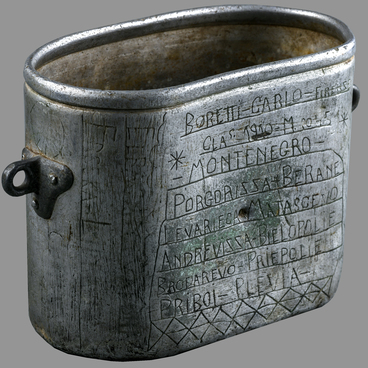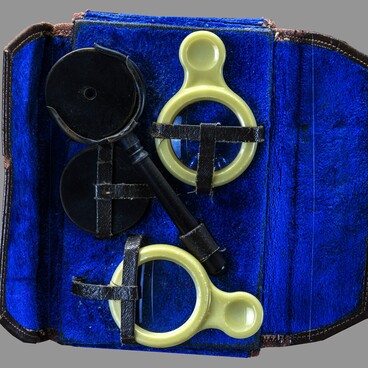In 1942 Orsk suffered one of its worst floods of the XX Century. A letter written on May 30 1942, when memories of the floods were still fresh, describes what happened all that time ago. Its writer, Polina Rakhman, tells her relatives:
View of the old town during the floods of 1942
Creation period
1942
Place of сreation
Orsk, Russia
Dimensions
20x25 cm
20х32 cm
20х32 cm
Technique
photographic printing
Collection
1
Open in app#1
A.I. Goryansky
View of the old town during the floods of 1942
#2
#7
‘It started with an announcement that there would be no rain. People were sitting calmly in their huts. And then suddenly, at 5 o’clock on April 27- it was just after a day off - they said on the radio that there would be a flood. They told us which streets would be flooded, but by them lots of people had their houses flooded and were standing on their roofs… By the morning of the 29th you couldn’t see the first floor windows at all. The men made a raft, which we used to get to dry land, that is, to a hill, where we waited until the water receded, and I got home again on May 5. Now I will tell you about how people coped. On April 29 almost the whole town was flooded. People were sitting on their roofs, in the middle of a small sea, shouting out Help! and We are dying! et cetera. First they rescued the people whose houses were at risk of collapsing, while those whose buildings were in better condition had to sit and wait. And they only rescued people, all their things were left behind in their attics… The whole town spent a day on the hill, and at night people crowded into all the schools, clubs and other public buildings, where there was nowhere to sit or lie down, and in the morning we went up to the hill again… We started to run out of bread, the bread got wet, and they organized flights from places that were not flooded and dropped supplies to the hill, and from there people took them to the shop for distribution.’
#8
The boundary of the flooded area - around Preobrazhensky Hill - formed a line passing through the theatre on Sovietskaya Street (now the Pyatyorochka shop), and the yard in front of school No. 49, then crossing Sovietskaya Street, passing through the T G Shevchenko museum in the Orsk citadel, running along Shevchenko Street and across 9 January Street at the intersection with Sverdlov and Voroshilov Streets, and then crossing Karl Marx Street and back to Sovietskaya Street, leaving the post office at No. 22 unflooded.
In and around Orsk, the River Ural reached a height of 9.7 meters. A certain E.S. Pumpur remembers seeing the flour warehouses of the Orsk Bakery being submerged by a 2.5 meter-high wave. The needy were issued ration cards entitling them to 300 grams of bread a day, and even that came to an end. It was a time of real hunger. For two weeks no rations were given to anyone, whatever category they were in.
In the records of the meeting of the town council held in August 1942 it is stated that 1493 houses in Orsk were destroyed and 2508 needed complete overhaul, and according to the records of the February 1943 meeting almost 5 000 houses, as well as many utilities buildings, schools and hospitals had been destroyed.
The photograph in the exhibition is one of a series taken by Captain Goryanskiy during the floods.
In and around Orsk, the River Ural reached a height of 9.7 meters. A certain E.S. Pumpur remembers seeing the flour warehouses of the Orsk Bakery being submerged by a 2.5 meter-high wave. The needy were issued ration cards entitling them to 300 grams of bread a day, and even that came to an end. It was a time of real hunger. For two weeks no rations were given to anyone, whatever category they were in.
In the records of the meeting of the town council held in August 1942 it is stated that 1493 houses in Orsk were destroyed and 2508 needed complete overhaul, and according to the records of the February 1943 meeting almost 5 000 houses, as well as many utilities buildings, schools and hospitals had been destroyed.
The photograph in the exhibition is one of a series taken by Captain Goryanskiy during the floods.
#9
Orsk Museum of Local Lore
read morehide
00:00
00:00
1x
View of the old town during the floods of 1942
Creation period
1942
Place of сreation
Orsk, Russia
Dimensions
20x25 cm
20х32 cm
20х32 cm
Technique
photographic printing
Collection
1
Open in app
Share



